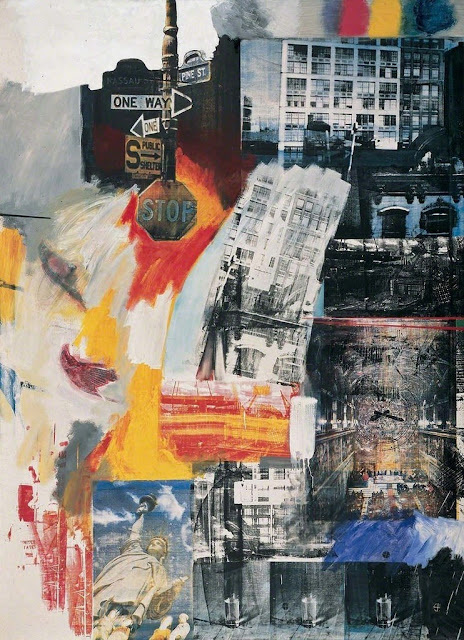White Paintings
 |
| Robert Rauschenberg with his White Paintings (1951) |
In 1951 Robert Rauschenberg completed a series of all white paintings. These were executed as multi-panel works with varying numbers of panels. His friend the avant-garde composer famously John Cage called them "landing strips for shadows, light, and particles." In turn, these paintings inspired his famous - we might say infamous piece 4' 33" - which consisted entirely of four minutes and 33 seconds of silence. After Cage saw these paintings he came to the conclusion that perhaps experimental music had some catching up to do with the visual arts.
Many people are apt to dismiss these paintings - after all, they are nothing more than apparently blank canvases. What is there to see? Many critics dismissed them at the time as a kind of Dadaist prank. However, Rauschenberg and his friend Cage - informed by the Zen teaching of D.T. Suzuki - believed that there was no such thing "nothing." They thought that this emptying out of form and content would create a space for new experiences and possibilities.
Regardless of what you think about the White Paintings themselves, I think that Rauschenberg's subsequent work bears this out. The White Paintings set the stage for everything which followed. They established the canvas as space which was open to the world and contiguous with it: a space of openness, optimism, and happy accidents. Through the White Paintings Rauschenberg found a new attitude towards the world which rapidly led to an explosion of creativity and invention - most notably epitomized by his Combines, made just a few years later.

Comments
Post a Comment